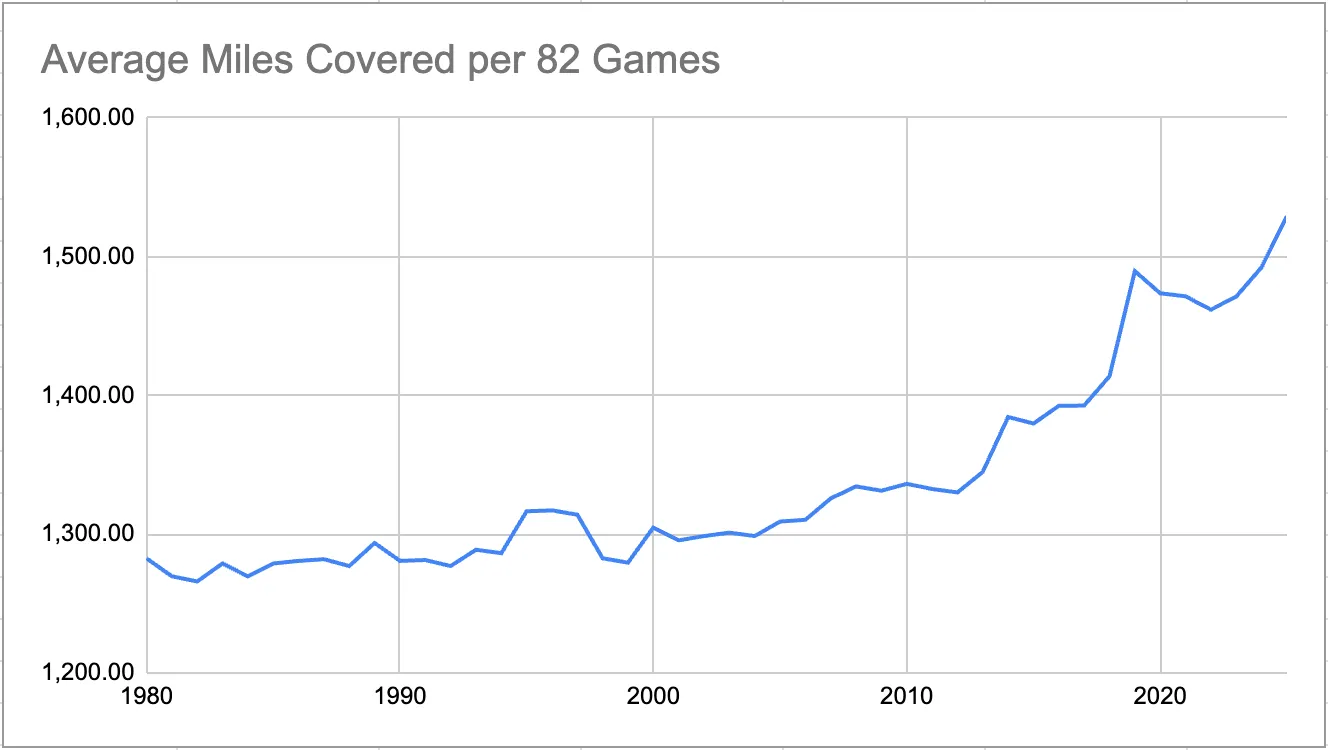Indomitable wrote:ForeverTFC wrote:Handlez wrote:They don't make em like they used to.
Go look at Stockton and Malone's minutes while playing 82 virtually every year lol.
I know I'm likely getting trolled, but I can't resist.

You simply are saying they run more. The 90s were far more physical.
I have no idea where this graph comes from, its methodology, or how reliable of a source it is (the numbers should be pretty accurate for recent years, but I've no idea how they would determine this for the 1980 season when I'm not even sure there is game footage available for every game back then), but let's assume it's true and break the numbers down a bit...
The graph shows that roughly 200 more miles are covered over an 82-game span now than in 1980.
To break that down per game, we divide 200 by 82, and we get 2.44 additional miles per game.
But of course each game is played by 10 players, not 1. So when we distribute the additional miles per player, we get about .244 additional miles for each player. Now that we are into fractions, let's convert to meters to make it easier.
1 mile is roughly 1,609 meters, so .244 miles is about 392.6 meters.
But of course players don't play a full 48 minutes, there are subs. Bridges, for example, only plays about 75% of each game on average.
And if we take the 392.6 meters and multiply by 0.75, we see that a player like Bridges is moving an additional 295 meters per game than a player from 1980 that played the same minutes.
According to this article, that's about 1-minute of sprinting for a male in good shape:
https://www.weekand.com/healthy-living/article/average-time-male-run-300-meters-18058607.phpFeel free to check my math, as it's late, but I'm pretty sure I did that right.
So 1-minute of extra sprinting per game, not insignificant by any means, but we also have to factor in that high-end starters like Bridges would probably be playing more minutes in previous eras, so the difference is likely less in actuality.
Plus modern NBA players get private jets instead of flying commercial (or buses way back in the day), they don't have the grueling schedule players in the past had to deal with (games on three consecutive nights sometimes back in 1980, but even up until recently five games in 7 nights was not uncommon), and of course all the advanced training and breakthroughs in diet that fans of the modern game remind us about regularly, which should be helping players recover and stay healthier and fresher for games.
Plus, there was literally no such thing as a flagrant foul in 1980, so I do think the game was rougher as players weren't as protected as they are now, not to say the game isn't more physical in other ways now (offensive players are allowed to initiate much more contact now than they were in 1980, for example).
Not really taking a side here, I just thought it'd be interesting to see how the numbers break down.
Personally, I think what Thib's does with minutes is fine, but all of his starters should get like 4-5 rest days per year imo to help their body recover. I think that would likely have more benefit than a couple less minutes a game, but I'm not an expert on the human body and physiology so maybe I'm off base on that one.



























